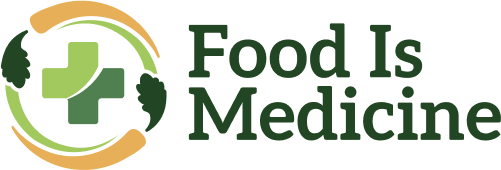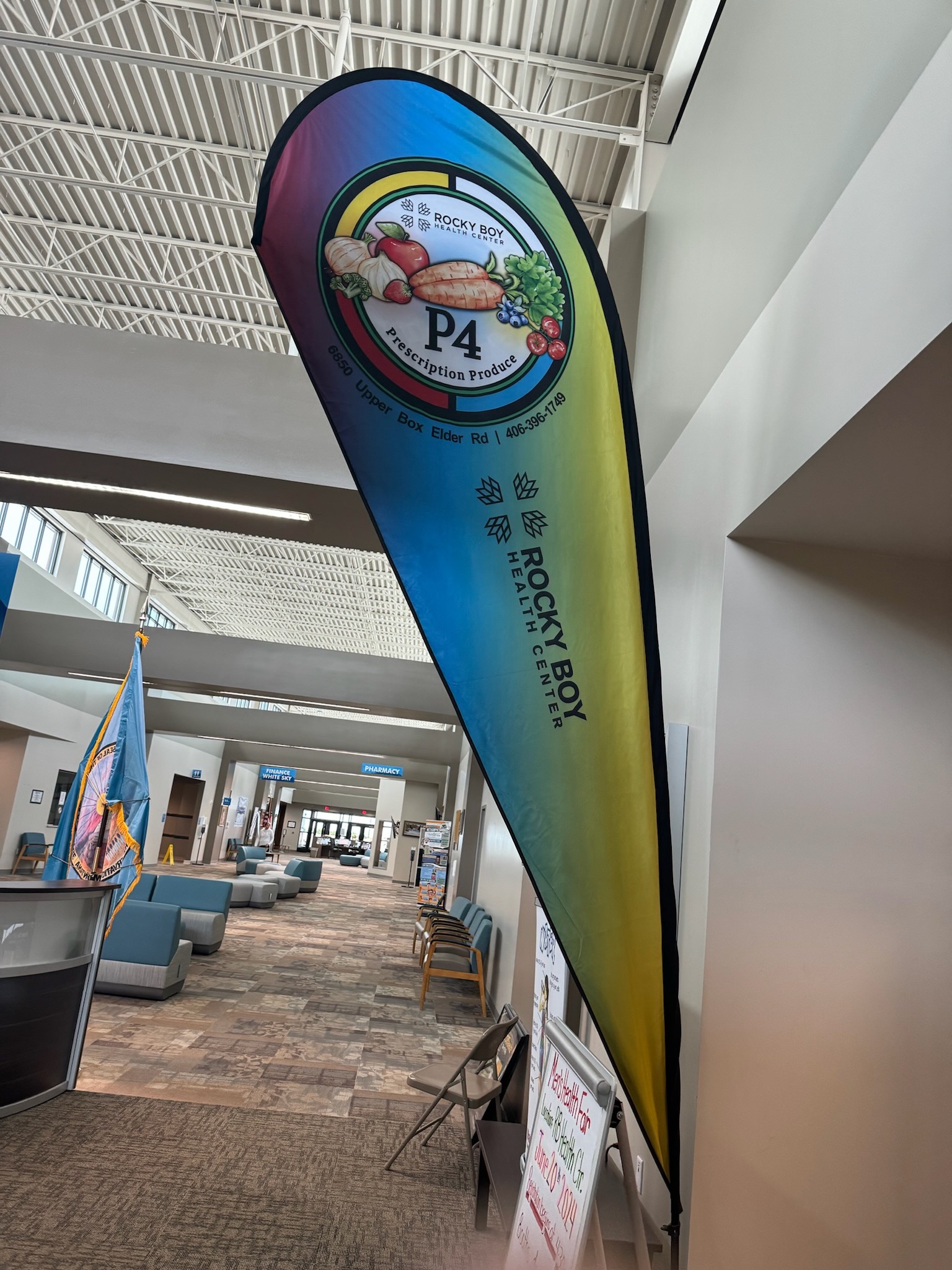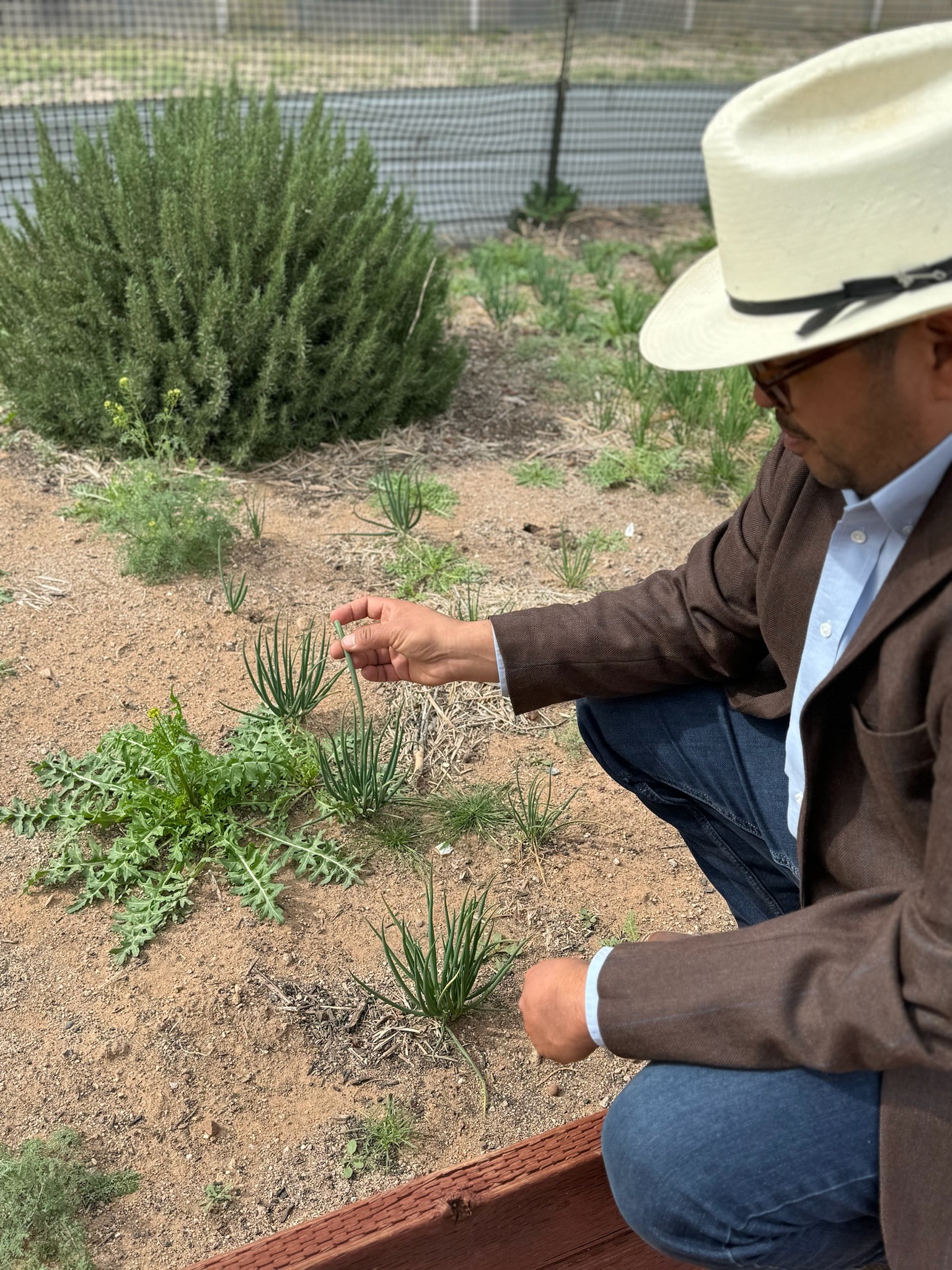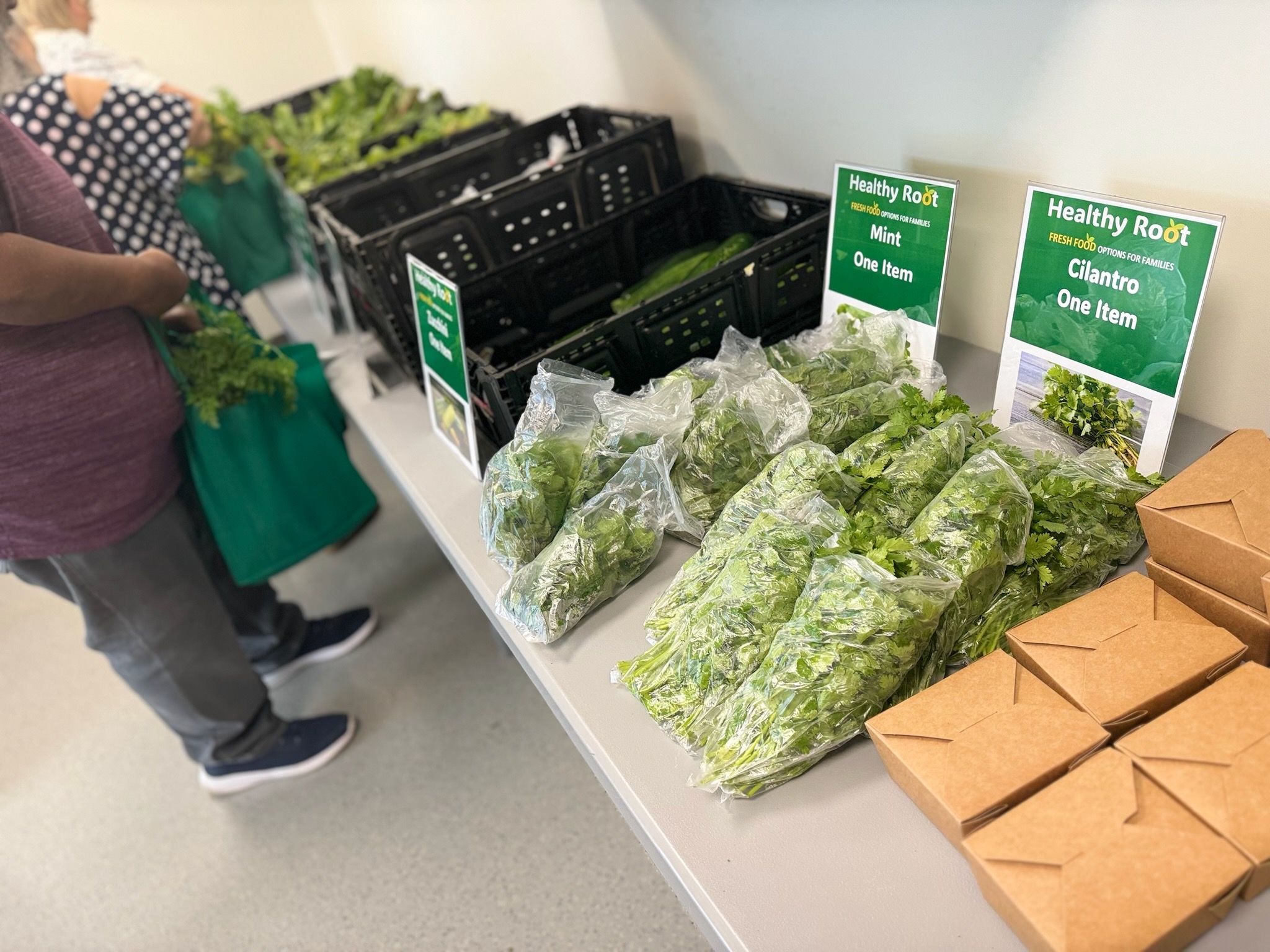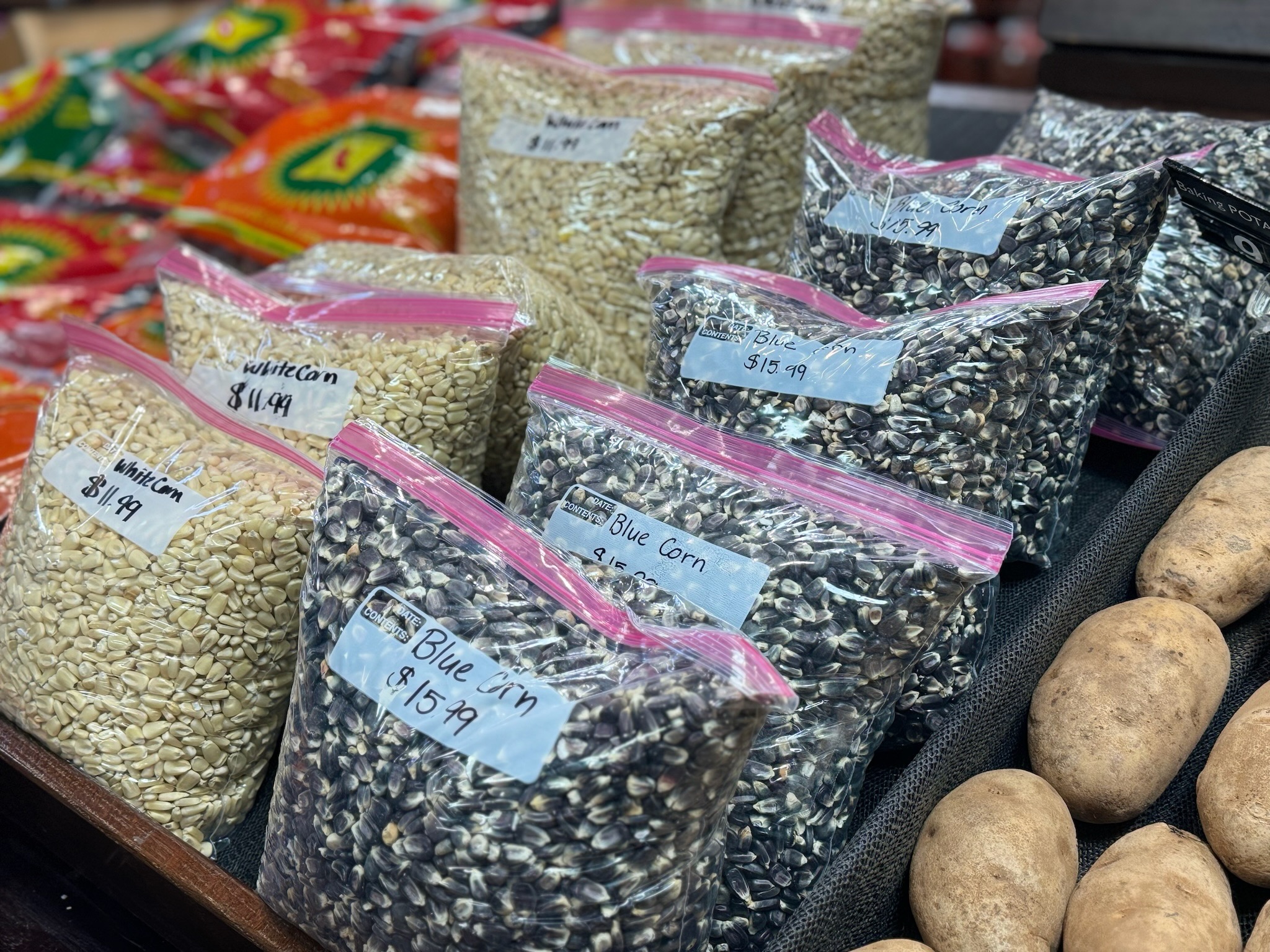Collective Learning
Prioritizes partnering with communities to facilitate shared learning and experience before asking grantee communities to identify a plan of action.
Community-led Vision
Is centered around the communities’ unique needs and driven through a partnership model that supports communities in determining the vision and best implementation approach.
Holistic Foundations
Supports an Indigenous perspective to Food Is Medicine, supporting connections between person, community, and environment while integrating healing with investment in food sovereignty and Indigenous farming to support whole-person health.
Bright Spot Profile
The Indian Health Service (IHS) is a federal agency within the U.S. Department of Health and Human Services that provides a comprehensive health service delivery system for American Indians and Alaska Natives (AI/AN).
IHS is advancing Food Is Medicine (FIM) efforts by providing funding to tribal organizations for innovative produce prescription interventions through the IHS Produce Prescription Program (P4). IHS was included in the Bright Spot series to demonstrate a collaborative and comprehensive funding approach that gives autonomy to tailor their innovative interventions to the needs of their respective communities. With the shared goal of thriving communities, IHS, grantees, and Indigenous communities work together to ensure that the program prioritizes food access, food sovereignty, and the diet-related health needs of community members.
Funding Opportunity Development
At the White House Conference on Hunger, Nutrition, and Health in September 2022, IHS announced it would be developing a produce prescription pilot program (P4) to address food insecurity and the high prevalence of diet-related illnesses among AI/AN by increasing the consumption of fruits, vegetables, and traditional foods.
In April 2023, the IHS Division of Diabetes Treatment and Prevention issued the P4 Notice of Funding Opportunity. In July 2023, IHS awarded $500,000 annual five-year grants to the following five tribal organizations to design, implement, and evaluate P4 pilots:
- Laguna Healthcare Corporation
- Muscogee (Creek) Nation
- Navajo Health Foundation – Sage Memorial Hospital
- Pascua Yaqui Tribe
- Rocky Boy Health Center
Nested Funding and Partnerships
P4 supports a nested funding structure to accommodate multiple federal funding sources and partnerships with external sources. For example, all P4 grantee communities also receive IHS’s Special Diabetes Program for Indians grants, enabling them to apply for funding from both programs to address the issue of diet-related diseases.
Locally, each P4 grantee partners with its respective tribal health care centers and other grant programs supporting those centers (e.g., Good Health and Wellness in Indian Country).
Depending on the identified community needs, P4 grantees also partner with farmers and local grocers. To remove barriers to transportation, P4 grantees can work with Community Health Representatives (CHRs), which are community health workers who provide transportation to and from clinics and grocery stores.
Tailored Approaches
Grantees are empowered to design community-led pilots in vision and execution, so their implementation approaches reflect community feedback and connections. Some grantees partner with farmers to distribute food boxes to P4 participants, while others partner with local grocers to bring in fresh produce and implement prescription voucher systems. Other grantees are creating innovative hybrid models in rural communities that offer both a delivery option and a voucher option for in-store shopping.
Many participants prefer going to the store to make food choices, while others receive telephone-based support to order included foods. P4 pilot directors have diverse professional backgrounds (e.g., nurses, farmers). Moreover, their experiences can introduce different management perspectives and pilot approaches. While grantees vary widely by location, resources, and implementation plans, all grantees:
- Implement nutrition education approaches that teach participants about ways to integrate traditional foods into their meals and the connection the foods they eat have to the prevention and management of chronic disease. Nutrition education workshops, such as cooking classes, are intergenerational and welcome households, not just the individual P4 participant.
- Elevate food sovereignty as a core component of FIM approaches to ensure cultural history and the value of food by community is central to addressing diet-related health conditions. P4 grantees are uniquely positioned to assess the individual needs of their communities and create implementation practices that will fulfill community needs.
Through its P4 Support Team, the primary role is to assess the progress and outcomes of the pilots and provide P4 grantees with technical support, including efforts to improve access to healthy food and nutrition education. IHS hosts monthly cohort meetings, annual meetings, and site visits with grantees to conduct training sessions and receive program feedback.
Implementation Lessons
Common Challenges and Solutions
To capture the diverse lessons learned by P4 grantees, IHS collects annual progress reports from each grantee. Though there is variation among implementation plans, the IHS Support Team has identified common grantee challenges, such as:
- Difficulties identifying complementary grant funding from other federal agencies and local partners in their communities that permit direct food purchase, which may indicate that there are few other sources of such funds
- Barriers to recruitment, because some potential participants assume they cannot enroll in P4 if they are already enrolled in another food assistance program
- Staffing shortages in running daily operations, because clinicians leading P4 sites must still perform their daily clinical tasks
To address recruitment barriers, grantee staff have developed communications to reassure potential participants that they can participate in multiple programs. CHRs are also helping address the staffing shortages; grantees have found that if each clinician partners with four to five CHRs, they can maintain their practice alongside program operations.
Transparent Relationships with Grantees
IHS is fostering transparent relationships with their P4 grantees, and being open to feedback has been a major success. Significant investments in nutrition education may be critical to communities as Native American Elders are often more familiar with U.S. Department of Agriculture (USDA) commodity foods than traditional foods. To support awareness and understanding of this need, IHS hosts classes that teach P4 grantees about the health benefits of indigenous foods and how they can be prepared.
Food Insecurity Screening
To participate in P4, an individual must screen positive for food insecurity using the U.S. Department of USDA’s food security survey module. IHS has identified that some tribal members may be reluctant to seek help from the government for food insecurity due to concerns about potential experiences of racism. Individuals who do proceed with screening often misinterpret survey questions.
Additionally, survey questions were not culturally relevant for AI/AN, resulting in inaccurate screening results. To rectify this issue, P4 grantees modified the survey questions and offered one-on-one assistance to clarify confusing questions.
During fiscal year 2024, IHS will not require individuals to screen positive for food insecurity to participate in P4.
Evaluation and Plans for Scale
Program Metrics
The first year of P4 implementation is underway, and there is preliminary data showing that diabetic patients are more compliant with their clinic visits after participating in P4 than before. To further assess program outcomes, the IHS P4 Support Team is collecting the following metrics from grantees:
- Food insecurity rates over time
- Number of produce prescriptions issued and redeemed
- Consumption of produce and traditional foods
- Clinical markers (e.g., A1C, blood pressure, blood glucose, body mass index, and cholesterol)
- Measurement of nutrition education (e.g., number of participants receiving nutrition education, amount of nutrition knowledge obtained)
Limitations of the Consumption Metric
Grantees have identified difficulties in determining whether participants have increased their consumption of fresh produce and traditional foods. Consumption of fresh fruits and vegetables is a time-intensive, self-reported survey measure, and P4 participants have found it challenging to monitor changes in consumption because participants often share their fresh produce and traditional foods with other members of their household.
To improve information accuracy and participant experience, grantees have suggested measuring participants’ access to fresh produce and traditional foods rather than consumption.
Planning for Scale
To support expansion beyond the pilots, IHS must demonstrate that P4 improves the health outcomes and dietary habits of Indigenous communities. If successful, IHS will seek additional funding to expand P4 to more communities and structurally resemble the Special Diabetes Program for Indians. In this scenario, the grantees would adopt specific best practices to implement.
